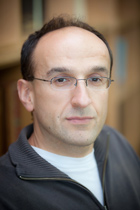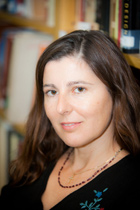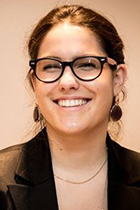

Course Outline
The Institute of Historical Research of the National Hellenic Research Foundation, one of the most important institutions for the study of Greek History (ancient, Byzantine and modern) at international level, after the success of its first Summer School on Greek Palaeography and Byzantine Epigraphy is pleased to announce the organization of the second edition of the Summer School with the kind collaboration of the Monastery of Saint John the Theologian in Patmos, the island of the Revelation.
The one-week intensive Summer School is an introductory course to Greek Palaeography and Byzantine Epigraphy aiming to provide students with basic skills for approaching manuscripts and written inscriptions.
A unique feature of this Summer School is that students will be given the opportunity to learn and practice within the Monastery of Saint John, which is now home to more than 1200 manuscripts and a large number of icons and monumental paintings with inscriptions dating from 12th to 16th century.
The Summer School will be held from 3 to 8 July 2017. The instructors are researchers of the National Hellenic Research Foundation and in particular of the Institute of Historical Research as well as external collaborators of the Institute with extensive experience in the study of Greek Palaeography and Byzantine Epigraphy. The lectures will take place at the Nikolaides Mansion whereas the practical exercise sessions inside the monastery and in the Apocalypses Cave.
The school is intended for PhD candidates, postgraduate, graduate students and pre-graduate students in their final year of Classics, Philology, History, Theology, Byzantine and Medieval Studies.
The course of Palaeography will be taught in Italian and English, whereas the course of Byzantine Epigraphy in English. Adequate knowledge of Ancient Greek is a prerequisite for participation.
The number of students is limited to 20. They will be selected by a Scientific Committee following a thorough assessment of the application and the CV of the candidates.
All students will receive a Certificate of Participation.
Programme
Sunday, July 2 Welcome Dinner
|
Monday, July 3 |
|
MORNING SESSION |
|
09.30 – 11.00 |
Introductory session – The Monastery of Patmos (Nicholas Melvani) |
11.00 – 11.45 |
Introduction to Greek Palaeography (Zisis Melissakis) |
11.45 – 12.30 |
Evolution of Greek script: 4th AD - 10th c. (Zisis Melissakis) |
12.30 – 13.15 |
Visit to the Monastery and the Library (Zisis Melissakis) |
13.30 – 14.15 |
Light Lunch |
EVENING SESSION |
|
17.00 - 17.45 |
Introduction to Byzantine Epigraphy (Nicholas Melvani) |
17.45 – 18.30 |
History of Byzantine and Post – Byzantine Epigraphy 12th - 15th c. (Nicholas Melvani) |
18.30 – 19.15 |
Practical exercise on inscriptions (Nicholas Melvani) |
19.15 – 20.00 |
Practical exercise on inscriptions (Nicholas Melvani) |
Tuesday, July 4 |
|
MORNING SESSION |
|
10.00 - 10.45 |
Practical exercise on manuscripts (Zisis Melissakis) |
10.45 – 11.30 |
Practical exercise on manuscripts (Zisis Melissakis) |
11.30 – 12.15 |
Practical exercise on inscriptions (Nicholas Melvani) |
12.15 – 13.00 |
Practical exercise on inscriptions (Nicholas Melvani) |
13. 00 – 13.45 |
Light Lunch |
EVENING SESSION |
|
17.00 - 17.45 |
Evolution of Greek script: 11th - 16th c. (Zisis Melissakis) |
17.45 – 18.30 |
Practical exercise on manuscripts (Zisis Melissakis) |
18.30 – 19.15 |
The transcription of a Byzantine inscription (Nicholas Melvani) |
19.15 – 20.00 |
Dating system (Nicholas Melvani) |
Wednesday, July 5 |
|
MORNING SESSION |
|
10.00 - 10.45 |
The making of a Greek manuscript (part I) (Zisis Melissakis) |
10.45 – 11.30 |
Practical exercise on manuscripts (Zisis Melissakis) |
11.30 – 12.15 |
Practical exercise on manuscripts (Zisis Melissakis) |
12.15 – 14.00 |
Visit to the Monastery of Zoodochos Pigi |
14.00 – 15.00 |
Light Lunch |
EVENING SESSION |
|
15.00 – 16.00 |
Practical exercise on inscriptions (Nicholas Melvani) |
16.00 – 16.45 |
Practical exercise on inscriptions (Nicholas Melvani) |
16.45 – 17.30 |
How to edit an inscription // Inscriptions – Byzantine Epigrams (Nicholas Melvani) |
Thursday, July 6 |
|
MORNING SESSION |
|
10.00 - 10.45 |
The making of a Greek manuscript (part II) (Zisis Melissakis) |
10.45 – 11.30 |
Practical exercise on manuscripts (Zisis Melissakis) |
11.30 – 12.15 |
Inscriptions and donors (Nicholas Melvani) |
12.15 – 13.00 |
Practical exercise on inscriptions (Nicholas Melvani) |
14.00 – 14.30 |
Light Lunch |
EVENING SESSION |
|
17.00 - 17.45 |
Describing manuscripts (Zisis Melissakis) |
17.45 – 18.30 |
Inscriptions as a historical source (Nicholas Melvani) |
18.30 – 19.15 |
Practical exercise on manuscripts (Zisis Melissakis) |
19.15 – 20.00 |
How to read a manuscript (part I) (Zisis Melissakis) |
Friday, July 7 |
|
MORNING SESSION |
|
10.00 - 10.45 |
Practical exercise on inscriptions (Nicholas Melvani) |
10.45 – 11.30 |
Practical exercise on inscriptions (Nicholas Melvani) |
11.30 – 12.15 |
Practical exercise on manuscripts (Zisis Melissakis) |
12.15 – 13.00 |
Practical exercise on manuscripts (Zisis Melissakis) |
13.00 – 14.00 |
Light Lunch |
EVENING SESSION |
|
14.00 – 14.45 |
Practical exercise on inscriptions (Nicholas Melvani) |
14.45 – 15.00 |
Inscriptions and painters (Nicholas Melvani) |
15.00 – 15.45 |
Practical exercise on manuscripts (Zisis Melissakis) |
15.45 – 16.30 |
Manuscript decoration (Zisis Melissakis) |
Saturday, July 8 |
|
MORNING SESSION |
|
10.00 - 10.45 |
How to read a manuscript (part II) (Zisis Melissakis) |
10.45 – 11.30 |
Describing manuscripts (Zisis Melissakis) |
11.30 – 13.00 |
Artists' pigments in early Byzantine manuscripts: A case study on the miniature illustrations of the Book of Job (Patmos, Monastery of St John the Theologian, codex 171) (Harikleia Brekoulaki) |
13.00 – 14.30 |
Conservation workshop (Alexia Melianou) |
Application Procedure
The school is intended for PhD candidates, postgraduate, graduate students and pre-graduate students in their final year of Classics, Philology, History, Theology, Byzantine and Medieval Studies.
The course of Palaeography will be taught in Italian and English, whereas the course of Byzantine Epigraphy in English. Adequate knowledge of Ancient Greek is a prerequisite for participation.
The number of students is limited to 20. They will be selected by a Scientific Committee following a thorough assessment of the application and the CV of the candidates.
The final deadline for applying is: 26 April 2017 (00.00 EET)
Candidates are invited to submit the online application form.
Applicants will be informed of the selection results by e-mail not later than 2 May 2017. Along with the confirmation, they will also receive further information to complete the registration process.
Instructors

Dr. Zisis Melissakis
Dr. Zisis Melissakis is a Senior Researcher at the Institute of Historical Research (Department of Byzantine Research) of National Hellenic Research Foundation. His main research interests are Greek Palaeography and Codicology (cataloguing and study of manuscripts, codicological research, history of libraries) and History of the Greek printed book (15th-19th c.). He is the author of three monographs and numerous articles. His current research focuses on Mount Athos’ and other monastic libraries. At present he leads a project on the cataloguing the Greek manuscripts of St. John monastery in Patmos.
Full CV http://www.eie.gr/nhrf/institutes/ibr/cvs/cv-melissakis-en.pdf

Dr. Nicholas Melvani
Nicholas Melvani obtained his PhD in Byzantine Archaeology and Art History from the University of Athens in 2008. His doctoral dissertation “Late Byzantine Sculpture” was published as a monograph in 2013. He has collaborated on several research projects of the Institute of Historical Research of the National Research Foundation in Athens, where he teaches a course in Byzantine Epigraphy since 2012. He has held fellowhips at Koç University, Istanbul and at Princeton University. His research focuses on Byzantine sculpture, epigraphy, and on the history and topography of Constantinople. He has also published articles on Mount Athos and on Byzantine monasticism in general.

Dr Harikleia Brekoulaki
Harikleia Brekoulaki is a Doctor in Archaeology and holds a researcher position at the Institute of Historical Research, Department of Greek and Roman Antiquity (The National Hellenic Research Foundation). Her work mainly focuses on issues related to Greek painting, with a particular interest in the technological aspects of ancient polychromy. Her publications include the books L’esperienza del colore nella pittura funeraria dell’Italia preromana V-III secolo a.C. (2001), La peinture funéraire de Macédoine. Emplois et fonctions de la couleur, IV-IIème s. av. J.-C. (2006) and Mycenaean Painting in Context. New Discoveries, Old Finds Reconsidered (co-editors J. Davis and Sh. Stocker), 2016.
Full CV http://www.eie.gr/nhrf/institutes/igra/cvs/cv-brecoulaki-en.pdf

Alexia Melianou
Alexia Melianou is an Art Conservator specialized in Book Conservation. She graduated from the University Ecclesiastical Academy of Thessaloniki, program of Conservation and Management of Ecclesiastical Cultural Heritage. She continued her studies, specified in Book Conservation, at the Ecole nationale supérieure des arts visuels of La Cambre in Brussels, where she obtained a Bachelor and a Master degree. She has worked as an intern in Book and Paper Conservation at the Benaki Museum, Athens and at the Museum of Byzantine Culture, Thessaloniki. She has also worked as a Curator/ Conservator at the Library of the Monastery of St. John the Theologian, Patmos and in an archeological excavation at the Valley of the Nobles in Luxor, Egypt.
Venue
The Summer School will be held in the island of Patmos. Patmos belongs to the Dodecanese complex in the Aegean sea. It is the island where it is said that Saint John wrote the book of the “Apocalypse”. Thus, it is known as the island of the Apocalypse.
The capital of the island is Chora whereas Skala is the port. Other big communities in the island are Grikos and Kampos.
UNESCO declared in 1999 the island’s historic center (Chora), the Monastery of Saint John the Theologian and the Cave of the Apocalypse as World Heritage Sites.
The lectures will take place at the Nikolaides Mansion whereas the practical exercise sessions in the Library and Museum of the Monastery of St John the Theologian as well as in the Apocalypses Cave.
The Monastery of Saint John is built on top of the mountain and dominates not only the Chora of Patmos but the entire island. The key person exclusively responsible for the foundation of the Monastery and, to a certain degree, for the dynamic development of the monastery into a financially independent small state was a monk from Asia Minor, Christodoulos, who came from the region of Nicaea of Bithynia. He was a perceptive, educated, well-travelled, persistent and efficient monk, a leading figure having close and continuous contacts with the imperial and circles of the Patriarchate of Constantinople. Christodoulos had a practical mind and diplomatic skills too. Thanks to the imperial foundational chrysobull, Christodoulos secured for the island of Patmos administrative autonomy, imperial protection as well as the Patriarchate’s protection, the mandate for the cultivation of a high level education, wealth through the monastery’s dependencies and ships for trading purposes. He has also built the castle for the monastery’ s protection.
For a digital representation of the monastery you can visit the site:
https://www.google.com/culturalinstitute/u/0/collection/patmos-monastery?projectId=art-project
For more information visit the website of the Monastery: http://www.patmosmonastery.gr/
The Nicolaides Mansion is a two storey building in Chora of Patmos partially built in the 17th-18th century. It is a typical example of the urban architecture of the island. It maintains the morphological and structural features found in the homes of Patmos, such as "mantomata”, ie the stone frames of doors and windows, but it also has some unique features such as two gothic windows of the first floor.
After the earthquake of 1956, the mansion was severely damaged, and since 1959, after its donation by its owners to the Greek government, it was restored and organized in an exemplary way as a showroom by the Archaeological Service. The purpose of the exhibition that is hosted, is for the residents and the visitors to come into contact with the mansions and the lifestyle of the people who lived there and get to know the history of the island from prehistoric to modern times, through archaeological findings and information material.
How to get there
By Sea
A. By ferryboat
Patmos is connected by ferry with the port of Piraeus (journey approximately of 8 hours) and with the islands of the Dodecanese (Leros, Kalymnos, Kos, Rhodes), the Cyclades (Syros, Mykonos) and the Northern Aegean islands (Samos, Ikaria, Chios, Lesvos and Limnos), as well as with Northern Greece (Kavala).
For further information, please consult www.openseas.gr
Or the shipping lines:
www.bluestarferries.gr/site/content.asp?sel=&loc=2
www.hellenicseaways.gr/
B. By catamaran or hydrofoil
During the summer months, high-speed vessels connect Patmos to the islands of Samos, Ikaria, Leros, Kalymnos, Kos and Rhodes, all of which have airports.
For further information, please contact: www.12ne.gr/en/index.asp
Indicative timetable (to be checked before booking)
FROM |
TO |
DEPARTURE |
ARRIVAL |
Saturday, July 1st |
|||
Kos |
Patmos |
11.00 |
13.25 |
Kos |
Patmos |
13.30 |
15.50 |
Samos (Pythagorio) |
Patmos |
08.30 |
10.05 |
Sunday, July 2nd |
|||
Kos |
Patmos |
11.00 |
13.25 |
Kos |
Patmos |
13.30 |
15.45 |
Samos (Pythagorio) |
Patmos |
08.30 |
10.50 |
Sunday, July 9th |
|||
Patmos |
Kos |
10.55 |
13.15 |
Patmos |
Kos |
13.30 |
15.55 |
Patmos |
Samos (Pythagorio) |
15.50 |
18.10 |
By air
Although Patmos does not possess an airport, it is connected by boat on an almost daily basis with several islands. The closest international airport is in Samos in the complex of Northearn Aegean islands (departure of boats from Pythagorio). The second closest airport is located in Kos.
If you need any assistance for your travel arrangement, you could contact us by email ([email protected]).
Accomodation
We have made a prior arrangement with the hotels below:
Hotel |
Single Room |
Double Room |
60 Euros (breakfast included) |
80 Euros (breakfast included) |
|
30 Euros (without breakfast) |
35 Euros (without breakfast) |
If you are interested to lodge in one of the proposed hotels and especially if you wish to share a double room with another participant it is advised to contact us by email in order to arrange the booking for you.
Please bear in mind that the departure of the bus to the place of lectures is only from Skala.
Fees
There is a participation fee of 380 Euros. The fee is to be paid after the confirmation of acceptance has been received and the latest by 9 May 2017. The fee includes Summer School courses, course material, transportation within the island, a welcome dinner on Sunday 2nd July and a light lunch each day. Students are individually responsible for their transportation, accommodation and living expenses on Patmos island.
Cancellation/fee policy
Contact
For further information, please contact us by email at [email protected], or by phone (Mrs V.Kollia, +30 210 7273767)